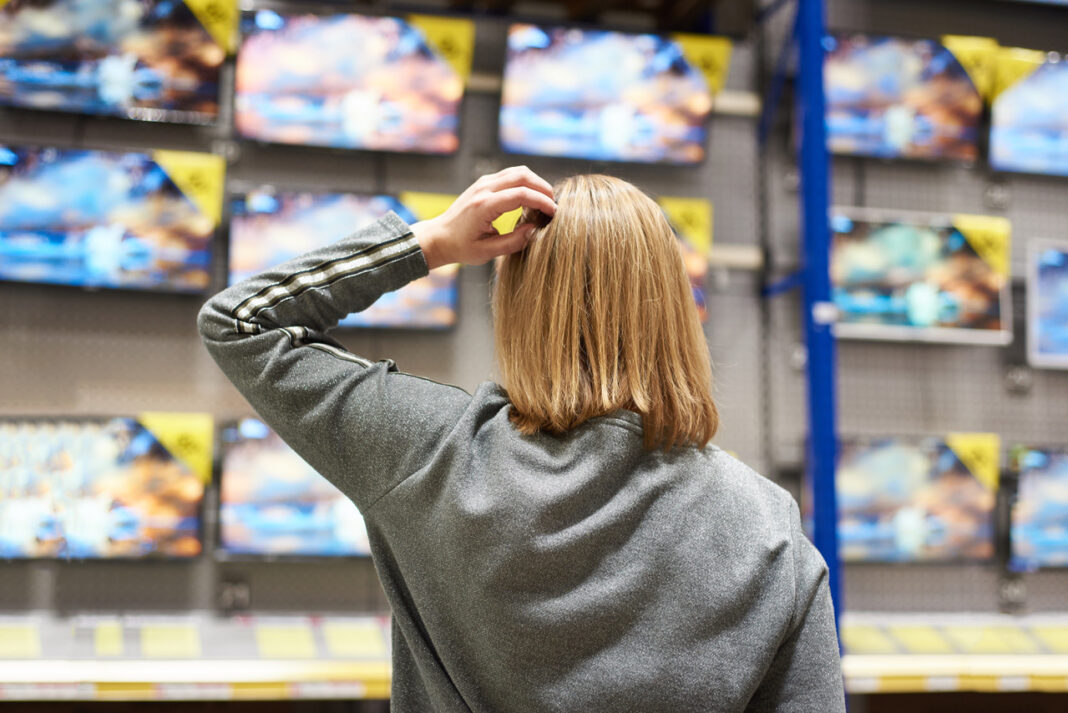Shopping for a new TV can be overwhelming these days, with all the technical specs and jargon which gets touted, it can become challenging to know which features really matter to you.
To help make things easier, we’ve put together the following Expert guide to TV terminology.
4K / 8K
This refers to the TV screen’s resolution, measured by width in pixels and rounded up to the nearest 1000. A 4K TV screen has a resolution of 3840 (width) X 2160 (height), and an 8K TV has a resolution of 7680 (width) X 4320 (height).
Backlighting
Backlighting is the lights which illuminate your TV screen and mostly comes in either edge-lit, which has lights along the edges of the screen which reflect inward towards the center of the screen, or full-array which means that the whole interior surface of the screen is covered by a panel of lights.
Contrast Ratio
Contrast ratio measures the difference between the brightest white the screen can display, and the darkest shade of black. This gives a good indication of how wide a range of shades the screen can render.
The contrast ratio is calculated by taking the brightest luminance, measured in candelas per square meter (cd/m2), and dividing it by the darkest. Ultimately the most important thing to bear in mind is that the bigger the number, the better the contrast ratio.
Frame Rate
Frame Rate is the frequency at which consecutive images get displayed on a screen and is typically measured in frames per second (fps) and is set by the screens input source. Most broadcast television is usually produced at 24 fps, while gaming consoles can render as much as 120 fps.
HD / High Definition
High definition, abbreviated as HD, refers to a screen resolution higher than 1280 X 720, although most standard HD screens operate at 1920 X 1080.
HDMI
HDMI is an acronym which stands for High-Definition Multimedia Interface. It is the most widely used current standard connection for transmitting a digital audio and/or video signal over cable for everything from gaming consoles to home cinema systems.
HDR
HDR, or High-Dynamic Range, is a feature which allows TV screens to display brighter highlights and darker, richer shades of black, to render a more vibrant image with full detail.
Local Dimming
Local Dimming is a technique by which TV screens adjust the brightness of the display in certain specific zones or regions on the screen to create a sense of depth in the image being rendered and to make scenes look more realistic and lifelike.
OLED
OLED stands for “organic light-emitting diode” and is a type of display screen which is able to produce both light and colour from a single display dot. Unlike other LED screens which reflect light through layers of filters, this gives them the benefit of wide viewing angles and also allows these screens to be housed in thinner TV units. Since each pixel or display dot is its own light-source, by turning the individual pixel off completely they can render rich, deep shades of black for incredible contrast.
QLED
QLED stands for “Quantum dot light-emitting diode” and is a type of TV technology pioneered by Samsung. Instead of using LED lights like other display types, these use smaller “quantum dots” to illuminate the image which is displayed on the screen. These screens can render scenes with excellent brightness and vivid colour, even in brightly lit environments.
Refresh Rate
A TV’s refresh rate, measured in Hertz (Hz) refers to how many times per second your TV can display a new image. While the frame rate gets set by the screens input source, the refresh rate measures the speed in which the screen can display the frames it receives. A higher refresh rate also allows TVs to render fast-moving content more accurately and with less motion blur.
UHD
UHD is an acronym which stands for Ultra-High-Definition. Referring to screen resolution, UHD can be used to describe any screen which has a resolution of 4K or greater (3840 X 2160).
Now that you know what all the techy TV terminologies mean, shop our Expert range of TVs here. Or if you’re still unsure what size screen you need, check our handy guide to picking the perfect size TV here.
For more Expert advice, give us a call on our customer helpline 087 095 5722.









